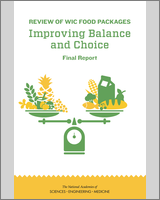| Bertmann et al., 2014 | Negative interactions in stores: annoyance or anger expressed by cashier or other shoppers Confusion over WIC rules: fluctuation in enforcement of redemption rules store to store and week to week Cashiers lack training: participants have to explain the rules Feeling of embarrassment when using CVV | Find strategic choice of times and locations at which to shop Choose particular cashiers Pool CVV (using multiple vouchers at once) |
| Christie et al., 2006 | Long duration of appointment wait time Dissatisfaction with customer service Dissatisfaction with the physical environment
|
|
| Gleason and Pooler, 2011 | Underutilization of infant food benefits |
|
| Gleason et al., 2011 | Maintaining food freshness (small WIC vendors) Availability of products in allowable form (e.g., bread in approved size)
| Continue and expand vendor training Continue to engage food suppliers Continue nutrition education of participants Use state WIC data for internal program management, policy making, ongoing monitoring Examine effect of minimum stocking requirements
|
| Gleason et al., 2014 | Participants: Gaps in knowledge (determining the amount of V/F with CVV) Incorrect information provided by cashier Limited selection of some WIC foods at local vendors and poor quality produce Lack of transportation (e.g., tribe located 30 minutes from a store)
Vendors: Delivery of spoiled items Difficulty anticipating demand and maintaining adequate supply of some WIC foods Challenges in serving participants who lack knowledge Challenges in communicating with local WIC agency
| Participants: Vendors: WIC Staff: Use open-ended question and probing to encourage discussion with participants Expand nutrition education opportunities Inform participants of local vendors
Local WIC Directors: State WIC Agencies: Offer additional training opportunities to staff Expand allowable WIC foods to include frozen and canned vegetables Develop a formalized local vendor liaison (LVL) program (CA example: LVL makes visits)
|
| Najjar, 2013 | Food package policies (e.g., container size) Negative grocery store experiences and personal misunderstanding and embarrassment
|
|
| Phillips et al., 2014 | Certain individual WIC foods have low rates of full redemption Could not use certain foods (i.e., received too much) Participants or their children disliked the food or did not know how to prepare them
| Implement targeted educational efforts to promote full utilization of WIC benefits Tailor nutrition education to include foods that are commonly underused and focus on culturally relevant approaches to incorporating these foods into meals and snacks
|
| USDA/ERS, 2010 | Of those exiting WIC at 1 year, transaction costs of participation may be a barrier: program requires too much effort and the benefits are not worth the time (26.2%) or they have scheduling or transportation problems (10%) Program requires too much effort, or scheduling, or transportation problems | |
| USDA/ERS, 2012 | Improved national economic conditions generally reduce participation rates for WIC and other national assistance programs | Poorer economic conditions and unemployment rates tend to improve participation rates when the program is fully funded |
